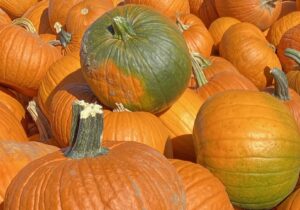 Witches, jack-o-lanterns, ghouls, and candy can be found anytime during the month of October, especially on Halloween. Why Do we celebrate Halloween?
Witches, jack-o-lanterns, ghouls, and candy can be found anytime during the month of October, especially on Halloween. Why Do we celebrate Halloween?
History of Halloween
Halloween started almost 2,000 years ago with an ancient Celtic festival Samhain. The Celts celebrated the new year on November 1st of every year. “This day marked the end of summer and the harvest and the beginning of the dark, cold winter, a time of year that was often associated with human death. Celts believed that on the night before the new year, the boundary between the worlds of the living and the dead became blurred. On the night of October 31 they celebrated Samhain, when it was believed that the ghosts of the dead returned to earth.”
Samhain (All-Hallows-Eve) was celebrated by burning big bonfires, parades, and dressing up as saints, angels, and devils to warn off any ghosts that might try to roam the earth.
It wasn’t until the beginning of the 19th Century when America started to adapt the autumn festivals into their lives, but not Halloween yet. During the end of the 19th Century, many immigrants from Ireland were fleeing the potato famine, and coming to America. This is what sparked the tradition of Halloween in America today.
“By the 1920s and 1930s, Halloween had become a secular but community-centered holiday, with parades and town-wide Halloween parties as the featured entertainment. Despite the best efforts of many schools and communities, vandalism began to plague some celebrations in many communities during this time.
By the 1950s, town leaders had successfully limited vandalism and Halloween had evolved into a holiday directed mainly at the young. Due to the high numbers of young children during the fifties baby boom, parties moved from town civic centers into the classroom or home, where they could be more easily accommodated.”
Halloween Today
“By the 1950s Halloween became a holiday that was primarily for the children. Trick-or-treating was commonplace as kids went around their neighborhoods in costume collecting candy. Halloween became increasingly embedded in popular culture and horror movies would often be released to coincide with the holiday. Movies such as “Nightmare on Elm Street,” “Halloween,” and “Friday the 13th” have all become classics associated with the holiday.
Halloween is now America’s second-largest commercial holiday, with $6 billion being spent on it each year. Numerous traditions such as trick-or-treating, costume parties, and watching horror movies all contribute towards a huge occasion that is celebrated throughout the country.”
Halloween Traditions
- Pick out your spookiest costumes
- Attend/ Plan a Halloween parade or festival
- Have a Halloween movie night
- Visit a pumpkin patch
- Carve/paint pumpkins
- Decorate your yard/home for Halloween
Happy Halloween!
